The Great Pacific Garbage Patch: Shocking images show the world’s biggest ocean tip as clean-up intensifies at fungus-infested site more than twice the size of NSW
Shocking images have exposed the world’s largest rubbish dump: 100,000 tonnes of everything from discarded refrigerators to children’s toys.
The Great Pacific Garbage Patch covers 1,605,000 square kilometers – an area more than twice the size of New South Wales – with the majority of waste coming from China, Japan, Korea and the US.
The water dump was first discovered in 1997 1,200 miles west of California and has since spread across the ocean, threatening marine life and releasing toxic microplastics into the atmosphere.
However, since 2019, the nonprofit Ocean Cleanup has been on a mission to change this through a $189 million project that aims to conquer the disgusting mess over the next decade.
“We’re getting it from the ocean while we still can,” Matthias Egger, the charity’s head of environmental and social affairs, told DailyMail.com.
Shocking drone footage has exposed the world’s largest rubbish dump from above: 100,000 tonnes of waste. As much as 80 percent of the waste consists of discarded fishing equipment from developed countries – mainly China, Korea, Japan and the US.
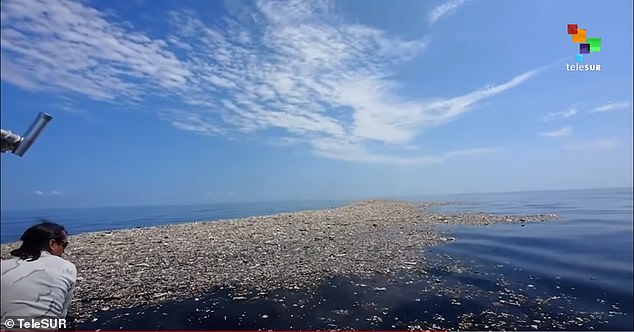
“Sometimes you hear that plastic pollution comes from developing countries that don’t have the infrastructure to dispose of things properly,” says Matthias Egger, head of Environmental and Social Affairs at Ocean Cleanup. “But we’re finding that most of the Great Pacific Garbage Patch is made up of items from highly industrialized countries.”
‘What we are actually doing is preventing an ecological time bomb.’
Egger said Ocean Cleanup was conceived several years ago by diver Boyan Slat, who founded the nonprofit after becoming frustrated by finding “more plastic than fish” in otherwise beautiful Mediterranean waters.
They started first with the largest waste pile in the world, known as the Great Pacific Garbage Patch.
During the early years, they focused on developing groundbreaking technology that could clear areas the size of a football field every five seconds.
The machine, known as System 3 and dubbed ‘Josh’ by its developers, removes foreign objects from the ocean without harming the natural marine life that swims in the same area.
“The System 3 machine, which is 1.4 miles in size, sends all the plastic into what looks like a large bag,” Egger told DailyMail.com.
Asked how the machine manages to scour the ocean for trash while leaving small fish unharmed, Egger added, “That’s the challenging part.”
‘When we developed the first version of the machine, we asked fishermen: “If you were to produce the worst possible fishing net, how would you do it?”
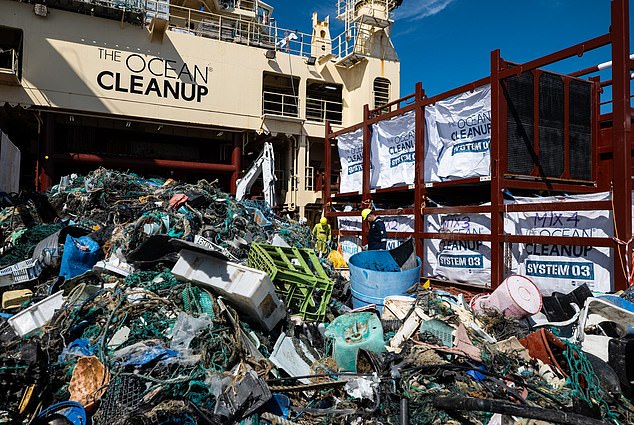
The floating garbage dump was first discovered in 1997 1,200 miles west of California and has since spread across the ocean
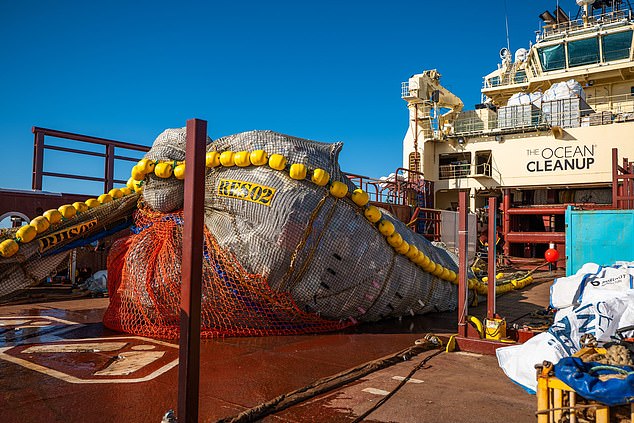
Since 2019, the Ocean Cleanup has been on a mission to change this through a $189 million project that aims to overcome the mess over the next decade
Egger explained that the system is designed to provide large escape routes for marine life to swim to the bottom, without losing any of the plastic that tends to float to the top.
He added that it is also programmed to make a sound that repels marine life, including dolphins and whales, so they are not in danger of approaching.
“Even if an animal enters the system, there are gaps and it can breathe before it finds an escape route,” he said.
Egger added that teams use a “plastic forecast” every day to determine where the “hotspots” are, based on ocean movements and weather conditions.
He said as much as 80 percent of the waste is discarded fishing gear from developed countries – mainly China, Korea, Japan and the US.
“We used to think that most of the plastic you find in the ocean comes from land,” Egger told DailyMail.com.
‘But what we do find is that most of the plastic that ends up from land into the ocean stays very close to the river and on the beaches.
‘Sometimes you hear in the media that plastic pollution comes from developing countries that do not have the infrastructure to dispose of things properly.
“But we’re finding that most of the Great Pacific Garbage Patch is made up of items from highly industrialized countries.”
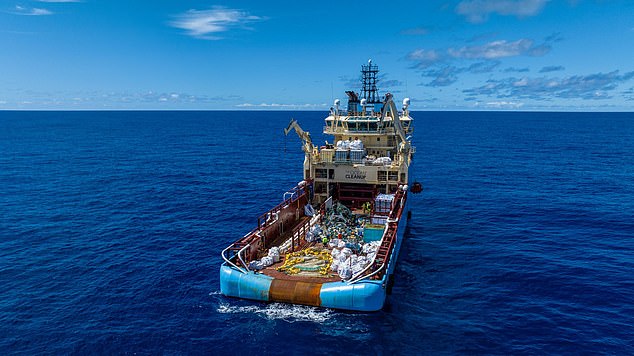
Egger said most of the plastic removed from the ocean can be recycled – and the Ocean Cleanup is working with Korean carmaker Kia, which is using the waste to build electric cars.
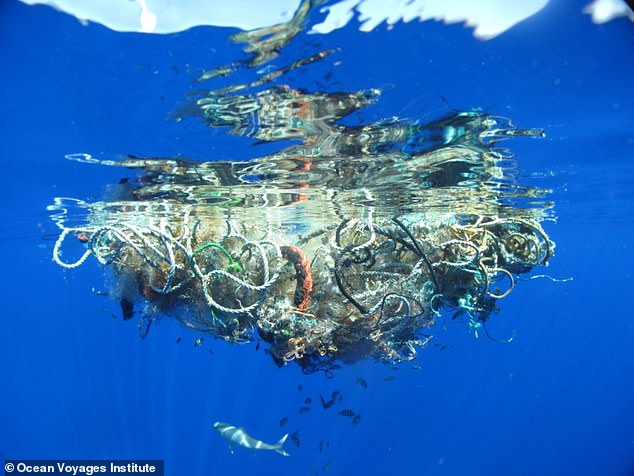
Egger explained that the system is designed with large escape routes for marine life, which can swim to the bottom without losing plastic, which tends to float to the top.
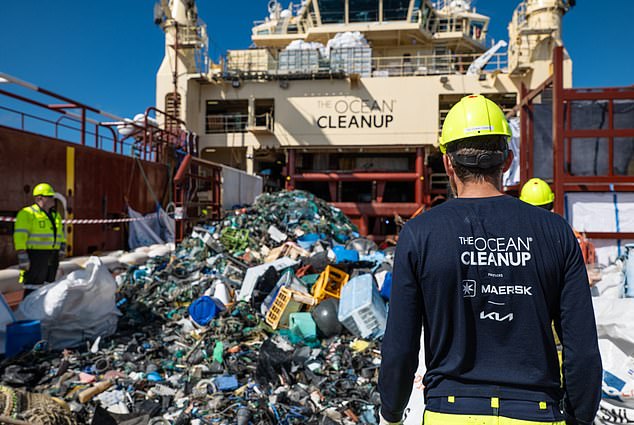
Egger said Ocean Cleanup was created several years ago by diver Boyan Slat, who founded the nonprofit after becoming frustrated by finding “more plastic than fish” in the otherwise beautiful waters of the Mediterranean.
Egger said the “biggest problem” posed by the waste in the ocean comes from the fact that it is starting to break down into toxic microplastics.
“They’re so small they go everywhere,” Egger said.
“They go into the fish, they go into the air, they go into the water – and they’re very difficult to remove.
‘Much of the oxygen we breathe comes from the ocean. Microplastics in the air also accelerate climate change.’
Egger said most of the plastic removed from the ocean can be recycled – and the Ocean Cleanup is working with Korean carmaker Kia, which is using the waste to build electric cars.
He said the large-scale behind-the-scenes data collection of the cleanup in the future could help hold countries accountable to their green pledges by tracking their waste production as they “bid our time” in the climate crisis.
Recently, an international group of scientists discovered a water-borne fungus chewing through waste, which is detailed in a new study published in the journal Science of the total environment.
The fungus was discovered among the whispering layers of other microbes living in the floating plastic pile, and it is only the fourth known marine fungus that can consume plastic waste.
